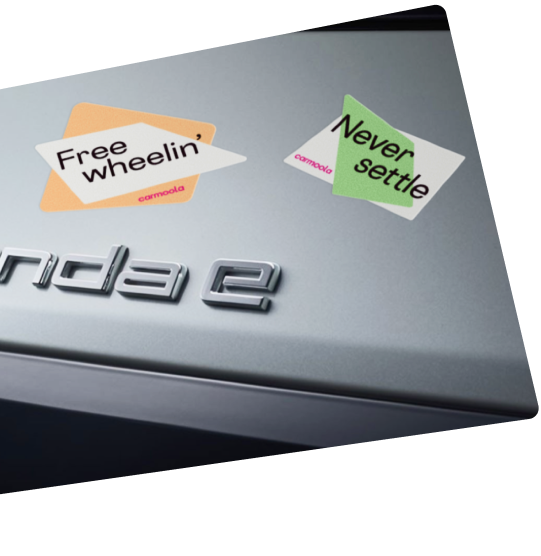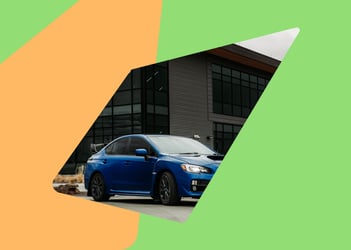Checklist for Driving in the Winter
Your car is exposed to various weather conditions all year round. In the UK, some summer days can be extremely hot, while the winter can be unforgivingly cold.
As a car owner, you want to prolong the life of your vehicle by keeping it in good condition. This means taking care of it and making sure it’s well-maintained at all times, but especially in winter.
Here’s a maintenance guide for winter driving! ❄️
Car Battery
Cold and damp weather can affect your car’s battery. If you have an old car and a battery that hasn’t been changed recently, you might want to consider having it replaced before winter.
You wouldn’t want your car to break down in the middle of nowhere because the battery has gone flat. It’s best not to wait for your battery to die before getting it changed.
If you’re already having trouble starting your vehicle, then that’s a sure sign that the battery won’t last for very long. Visit your local garage so that a professional can replace your old battery.
You may also do it on your own as long as you know the specific one you need for your car and are confident about your skills in removing and replacing car batteries.
When in doubt, take your car to a garage and leave the task to a specialist. For more information, check out our top car battery maintenance tips.
Screenwash
Winters are commonly wet, and the roads are muddy, which means road salt and dirt from the road can reach your windscreen and make it difficult for you to see your surroundings while driving.
When using the wipers, grime can be smeared across your windscreen, making it worse to see clearly. Make sure the screen wash has been refilled before you hit the road.
There are several screen washes available, from concentrates to ready-mix solutions. It’s important that you use a proper screen wash and not just water, as water will freeze and be absolutely useless in washing off the dirt from your windscreen in cold weather.
Antifreeze
Antifreeze is essential in stopping the engine's cooling system from freezing. It would be advantageous to have an antifreeze tester so you can easily check if the antifreeze is still effective. Testers are readily available in most local car shops.
To use the antifreeze tester, unscrew the cap of the coolant reservoir and get a sample of antifreeze using the tester tube.
You may then analyse the sample by referring to the tester’s scale. If the antifreeze is no longer effective in stopping the cooling system from freezing, it’s time to replace it.
Lights
Remember to check all of your car lights to see if they’re functioning properly. During winter, the days are much shorter, so you’ll rely on your lights more to see clearly while driving.
Clean the lights thoroughly whenever you wash your car (and maybe you will also need to do this in between car washes) so that they will be visible to other road users.
If some of the lights are no longer as bright as the rest, then it might be time to change them. And it's really important they are clean for night driving, otherwise you will have more difficulty seeing the road ahead and for others to see you!
This is a very inexpensive and easy task so make sure to do it before you drive your car. Your lights are important in keeping you safe.
They also inform other road users if you’re turning, reversing, slowing down, or if you need to make an emergency stop.
Tyres
Will you be driving frequently during winter? If so, consider getting winter tyres to make driving on snow and ice easier.
Winter tyres can be expensive but it’s much safer to use them compared to regular ones.
Even if you think you won’t be driving a lot in winter, you must check the tyre tread depth before you go.
Having tyres with a tread depth below 1.6mm is illegal because it will make it extremely difficult to steer and brake, making it dangerous for yourself and other road users.
Potholes and the damage they cause are severe. So it's worth checking your tyre treads regularly.
Things to Have for Winter Driving
Getting stuck in winter, maybe in snow, is something you definitely want to avoid if at all possible.
However, it’s still wise to prepare for the worst. Even if you think you’ve checked everything, the car can break down during extreme weather or get stuck in heavy snow.
Here are some tools and other things you should pack in your car for winter driving.
- Extra clothes to keep you warm
- Charged torch and extra batteries
- Wellington boots
- Tow ropes
- Shovel
- De-icer and scraper
- High-visibility vest
- Hazard warning triangle
- First aid kit
- Emergency mobile phone and charger
- Food and hot drinks in case you get stranded
It's not a bad idea to keep an emergency breakdown kit with you, particularly in winter! ❄️
If you drive an electric car, you might be interested in our article on driving electric cars in winter.
Takeaway
Take time to do these checks before you drive during winter. Knowing that you’ve taken all the necessary steps to keep your car in good condition during harsh weather will give you peace of mind as you’re driving!
Remember to check the weather forecast before you start your journey. If you expect heavy rain or snow, you might want to reschedule your trip.
It’s always best to make sure you’ll have a safe journey. If you do have to make the trip, find the best routes and plan ahead.







